From the late 1950s until the late 1970s, China’s People’s Liberation Army (PLA) lobbed thousands of tons of steel, in the form of mortar shells, onto the island of Kinmen. Artisans would then collect the metal and process it into knifes which, due to their reputation for sharpness and durability, have became popular throughout Taiwan.
Many of these shells — deliveries of which arrived every other day — were thoughtfully filled with light reading material, mostly about the crimes of the imperialist Americans and greatness of Mao Zedong (毛澤東), and, not to worry, the Chinese will be over to liberate Taiwan anytime now.
Serving for decades as the front line in the war of more than just words between the Republic of China (ROC) on Taiwan and the People’s Republic of China, Kinmen is a must see for any student of the Chinese Civil War, or of the Republican era in Taiwan.
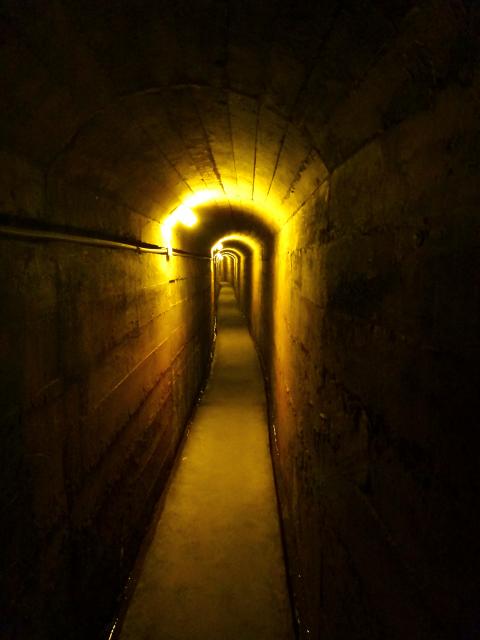
Photo: dean karalekas
Of course, there was nothing lighthearted about the PLA shelling of Kinmen Island during the Second Taiwan Straight Crisis, which started on Aug. 23, 1958 and is known as the 823 Artillery Bombardment (八二三炮戰), with a constant bombardment of more than 400,000 shells — initially filled with high explosives, later with propaganda.
This continued for 18 years, and the estimated one million shells, mostly unexploded ordnance, turned out to be something of a windfall for the Wu (吳) family and their Chin Ho Li Steel Knife Factory (金合利).
Those shells still provide ample raw material for Wu Tseng-dong (吳增棟), whose grandfather began beating swords into ploughshares (more literally than metaphorically) as far back as the 1930s, when steel was hard to come by on Kinmen save in the form of bombshells and shrapnel. Now in its third generation, this family business continues to use Chinese ordnance in its knives, which make an ideal souvenir or gift.
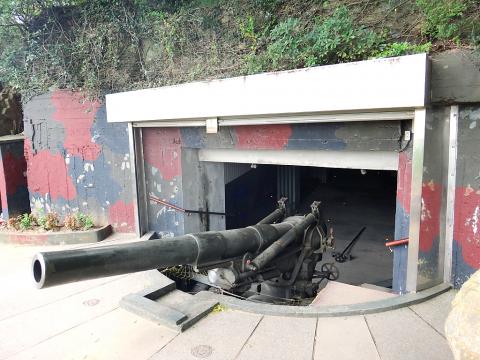
Photo: dean karalekas
In addition to the cleavers and other kitchen knives that are often talked about, the Wu family also makes buck knives, pocket knives and even machetes.
TUNNELS
Another result of that constant bombardment is the underground world to be found on Kinmen. To escape the hail of knife-making material, civilians would take their families into the subterranean passageways snaking deep below towns, with entrances located in municipal offices, schools, pillboxes and even private homes. One of the easiest for tourists to visit is in the town of Qionglin (瓊林). Located in the narrow, central portion of the island, Qionglin earned the moniker Combat Village for its extensive tunnel network.
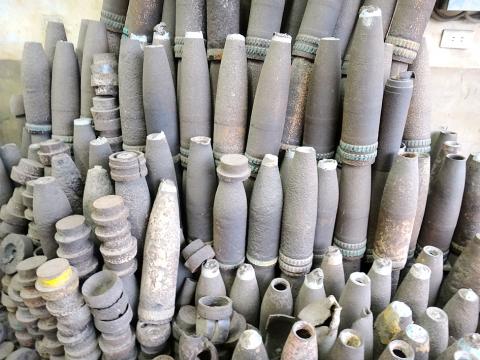
Photo: dean karalekas
The Qionglin civil defense tunnel runs 1,355 meters in length, has 12 entrances (although now, as a tourist attraction, there is only one way in after paying the NT$10 entrance fee), and boasts an underground command post, bunkers and shelter areas. Though lit and kept reasonably clean, the narrow passageway offers a damp, oppressive 10-minute walk from entryway to exit, and is not for the claustrophobic. Brave visitors, however, are rewarded by being greeted at the tunnel’s exit by the town’s wind lion god.
In addition to the civilian defense tunnels, those built and maintained by the military are also a sight to behold. The Zhaishan Tunnel (翟山坑道) in the island’s southwest dates to the mid-1960s and runs to 101 meters in length. It includes two connecting waterways almost 360 meters long with a width of over 10 meters and a height of about eight; just enough for a small fleet of boats to be able to wait out the Chinese shelling. The tunnel is an eerie place to visit, especially if there aren’t loud groups of tourists, with its rocky walls and ceiling reflected in the still water, creating a real Batcave vibe.
No trip to Kinmen would be complete without visiting the Mount Lion Howitzer Front, with the macho mortar-shell-eating lion logo.
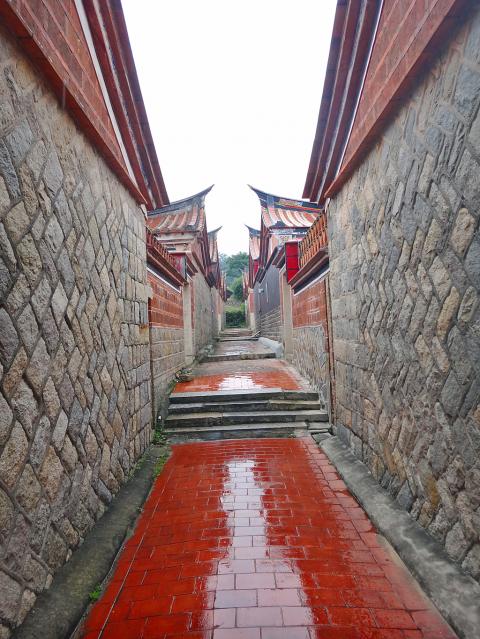
Photo: dean karalekas
Located in Kinmen’s northeast, this hollowed-out island is snaked-though with tunnels wide enough to drive trucks through, with an opening on the northern side big enough to accommodate the eight-inch Howitzer positioned there. The gun, with a range of 32km — twice what’s needed to reach the Chinese coast — is ceremonially fired every day, accompanied by a demonstration that is open to tourists.
MUSEUSMS
There are a number of highlights that help put the Taiwan Strait conflict into perspective, including the 823 Artillery Battle Museum (823 砲戰戰史館), the Guningtou War Museum (古寧頭戰史館) and the intriguingly named Military Brothel Exhibition Hall (特約茶室展示館).
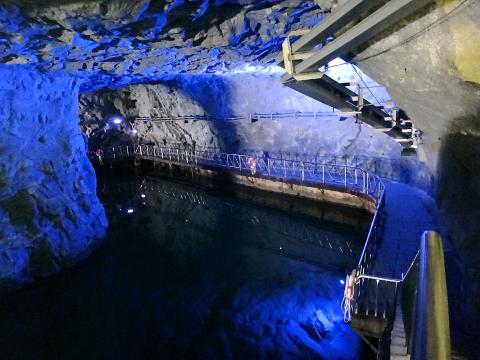
Photo: dean karalekas
The story of the Second Taiwan Straight Crisis is just one of many examples of the living history that awaits discovery by visitors to Kinmen. The traditional Minnan style mansions built by rich compradors and businessmen to house their families, today serve as comfortable guesthouses. The unique soil that produces little but sorghum and peanuts — the former giving rise to the famous Kaoliang liquor industry, and the latter to the lesser-known (but in this writer’s humble opinion, far more delicious) craft of making peanut candy.
The whimsical wind lion gods fashioned by the soldiers of Ming Dynasty warlord Cheng Cheng-kung (鄭成功), better known as Koxinga, dot the landscape and protect residents and crops from the wind.
The tourist infrastructure on Kinmen is remarkably well-developed, due in part to the early opening of direct trade, postal and transportation channels known as the mini-three-links, which was an initiative during the Chen Shui-bian (陳水扁) administration and intended as an overture to Beijing. Long before Chinese tourists were allowed even in groups to visit Taiwan proper, the mini-three-links between Kinmen and China saw visitors from the PRC able to step foot on the island so long within sight, yet divided by a political gulf.
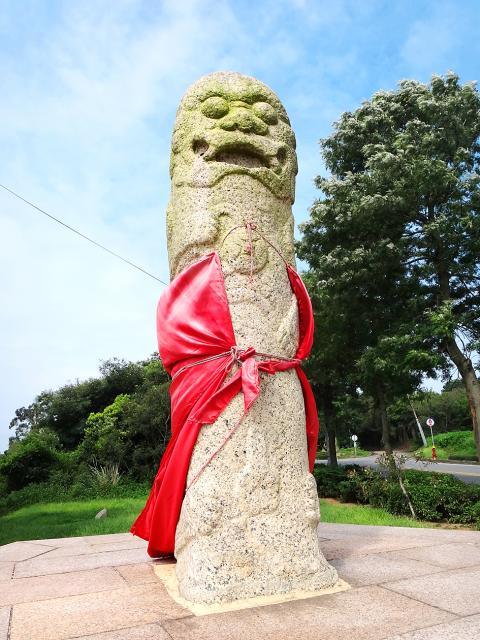
Photo: dean karalekas
Kinmen is a tiny island, and one that can be explored over a weekend and is so unlike the rest of Taiwan, it is well worth taking the time to discover.
GETTING THERE:
■ Several flights from Taipei’s Songshan airport connect the capital with Kinmen every day, including those by TransAsia Airways, Mandarin Airlines, Far Eastern and Uni Air. One-way fares average NT$2,000
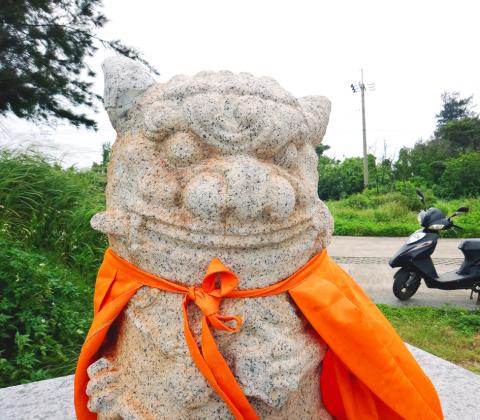
Photo: dean karalekas
INFORMATION AND TOURS:
■ Kinmen National Park (金門國家公園) offers a variety of bus tours of the main island, which range from NT$200 to NT$350. Tickets are available at the main bus terminal in Jincheng. Call 082-332-814 for more information
■ A Chinese-language map produced by the government is available for free at the airport and many hotels and guesthouses.
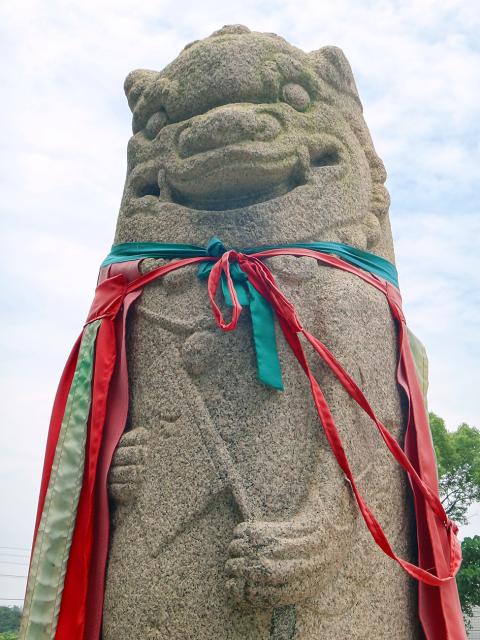
Photo: dean karalekas
WHERE TO STAY:
■ For a comprehensive list of guesthouses in Chinese, as well as detailed maps of the villages where they are located, go to guesthouse.kmnp.gov.tw. Bookings can also be made in English through agoda.com.
WHAT TO BRING:
■ Driver’s license. You’ll want to rent a scooter to explore the island. Other than that, everything you’ll need can be sourced on site.
■ SPF30 sunscreen and mosquito repellent. If you plan on riding a scooter or a bike around the island, be sure to wear a long-sleeve shirt to prevent sunburn

May 11 to May 18 The original Taichung Railway Station was long thought to have been completely razed. Opening on May 15, 1905, the one-story wooden structure soon outgrew its purpose and was replaced in 1917 by a grandiose, Western-style station. During construction on the third-generation station in 2017, workers discovered the service pit for the original station’s locomotive depot. A year later, a small wooden building on site was determined by historians to be the first stationmaster’s office, built around 1908. With these findings, the Taichung Railway Station Cultural Park now boasts that it has

The latest Formosa poll released at the end of last month shows confidence in President William Lai (賴清德) plunged 8.1 percent, while satisfaction with the Lai administration fared worse with a drop of 8.5 percent. Those lacking confidence in Lai jumped by 6 percent and dissatisfaction in his administration spiked up 6.7 percent. Confidence in Lai is still strong at 48.6 percent, compared to 43 percent lacking confidence — but this is his worst result overall since he took office. For the first time, dissatisfaction with his administration surpassed satisfaction, 47.3 to 47.1 percent. Though statistically a tie, for most

As Donald Trump’s executive order in March led to the shuttering of Voice of America (VOA) — the global broadcaster whose roots date back to the fight against Nazi propaganda — he quickly attracted support from figures not used to aligning themselves with any US administration. Trump had ordered the US Agency for Global Media, the federal agency that funds VOA and other groups promoting independent journalism overseas, to be “eliminated to the maximum extent consistent with applicable law.” The decision suddenly halted programming in 49 languages to more than 425 million people. In Moscow, Margarita Simonyan, the hardline editor-in-chief of the

Six weeks before I embarked on a research mission in Kyoto, I was sitting alone at a bar counter in Melbourne. Next to me, a woman was bragging loudly to a friend: She, too, was heading to Kyoto, I quickly discerned. Except her trip was in four months. And she’d just pulled an all-nighter booking restaurant reservations. As I snooped on the conversation, I broke out in a sweat, panicking because I’d yet to secure a single table. Then I remembered: Eating well in Japan is absolutely not something to lose sleep over. It’s true that the best-known institutions book up faster